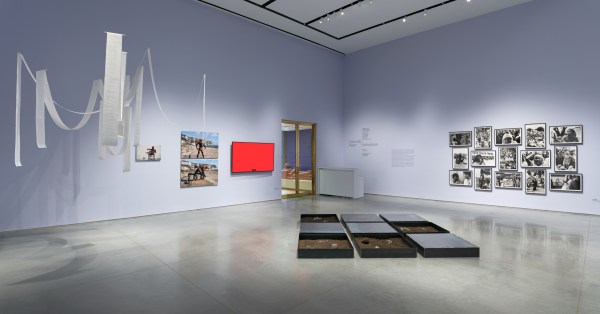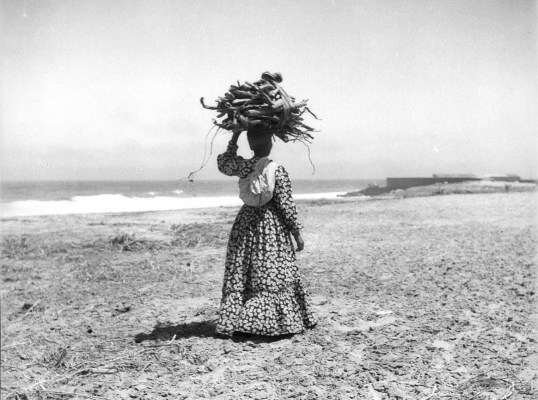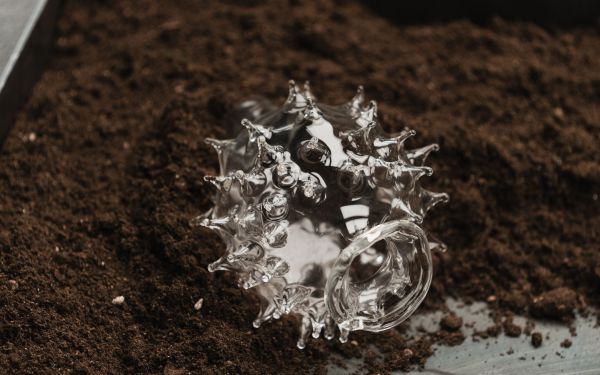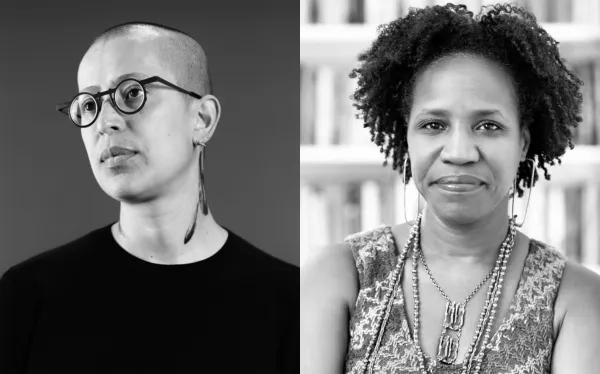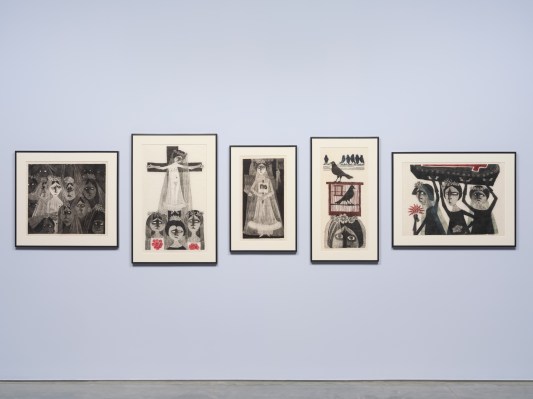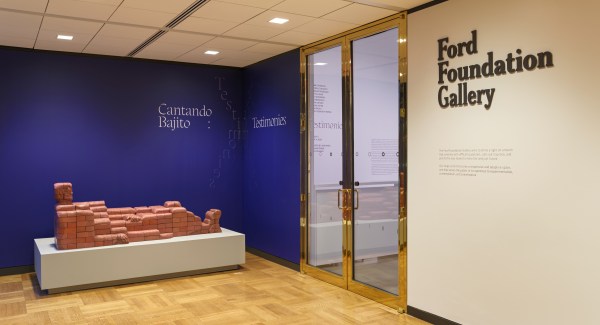Cantando Bajito: Testimonies
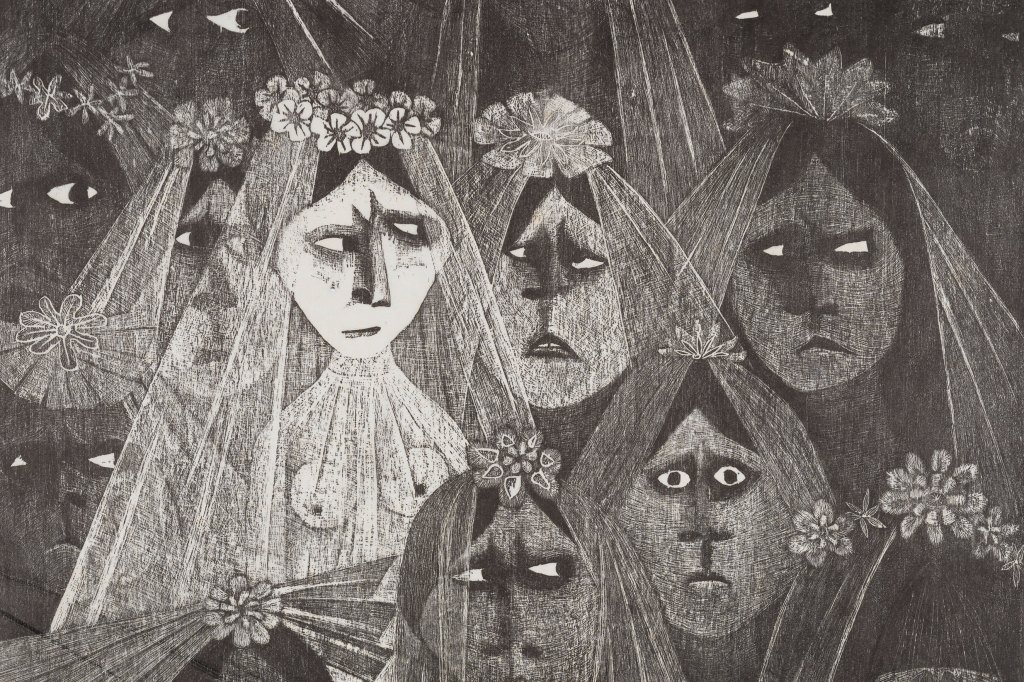
Curated by Isis Awad, Roxana Fabius, and Beya Othmani
Translated into English as “singing softly,” the exhibition series title is drawn from a phrase used by Dora María Téllez Argüello, a now-liberated Nicaraguan political prisoner, to describe the singing exercises she did while she was incarcerated in isolation. Helping her to conserve her voice and defeat the political terror she endured, Téllez’s quiet singing became a powerful strategy for survival and resistance. Conceived in three movements, Cantando Bajito features artists who explore similar forms of creative resistance in the wake of widespread gender-based violence.
Cantando Bajito: Testimonies features a wide range of artworks that foreground and build on strategies used to confront this violence, to imagine new forms of existing and thriving through and beyond it. The artworks reveal the methods individuals use to navigate violence, including the value of the testimonial, community-building, moving together in space, and subversive, even humorous, gestures that provide sustenance and pleasure. Grounded in a concept of testimony as an act that bears witness publicly, not limited to the spoken or written statement, Testimonies considers artworks as testimonial objects that carry a political memory of feminized bodies.
The vocal aspect of testimony is one of the central threads running among the featured artworks, encompassing many bodily forms of expression such as speaking, singing, protesting, taking of space in silence, and other voiced acts, all used to seek individual and collective survival, mobilization, and resistance in the face of oppression and violence. In Testimonies, we also foreground the performance of voice as a metaphor to celebrate its power as “an expression of embodied uniqueness” (Cavarero, 2005), a rehearsal of language outside of patriarchal norms, and an affirmation of agency.
With special thanks to members of the Cantando Bajito curatorial advisory group: María Carri, Zasha Colah, Maria Catarina Duncan, Kobe Ko, Marie Hélène Pereira, Mindy Seu, and Susana Vargas Cervantes.
Image: Leonilda González, Novias revolucionarias I (Revolutionary brides I), 1968. Courtesy of Museo Nacional de Artes Visuales (MNAV) Uruguay. Photo Sebastian Bach.
Leonilda González works are courtesy of:

About the curators
Isis Awad
Isis Awad is a curator, writer, and poet from Cairo, Egypt. She is the Founding Director of Executive Care*, a self-as-organization curatorial practice at the service of trans and queer artists of color from performance and nightlife. She also organizes national conferences aiming to find solutions for youth homelessness as Events Manager with the nonprofit organization, Point Source Youth. She was Exhibitions and Development Manager at Participant Inc in New York from 2018-19, and the MFA Exhibition Coordinator at The Milton Avery Graduate School of the Arts at Bard College from 2021-2022. Her writing has been published by The Brooklyn Rail, ArtAsiaPacific Magazine, Art Papers, BOMB Magazine, Topical Cream, and Movement Research Journal.
Roxana Fabius
Roxana Fabius is a Uruguayan curator and art administrator based in New York City. Between 2016 and 2022 she was Executive Director at A.I.R. Gallery, the first artist-run feminist cooperative space in the U.S. During her tenure at A.I.R. she organized programs and exhibitions with artists and thinkers such as Gordon Hall, Elizabeth Povinelli, Jack Halberstam, Che Gosset, Regina José Galindo, Lex Brown, Kazuko, Zarina, Mindy Seu, Naama Tzabar, and Howardena Pindell among many others. These exhibitions, programs and special commissions were made in collaboration with international institutions such as the Whitney Museum, Google Arts and Culture, The Feminist Institute, and Frieze Art Fair in New York and London. Fabius has served as an adjunct professor for the Curatorial Practices seminar at the Center for Curatorial Studies, Bard College, and Tel Aviv University. She has also taught at Parsons at The New School, City University of New York, Syracuse University, and Rutgers University. She is currently curating the 2024 exhibition series “Cantando Bajito” at the Ford Foundation Gallery.
Beya Othmani
Beya Othmani is an art curator and researcher from Algeria and Tunisia, dividing her time between Tunis and New York. Currently, she is the C-MAP Africa Fellow at the Museum of Modern Art (MoMA), New York. Her recent curatorial projects include the Ljubljana 35th Graphic Arts Biennial and Publishing Practices #2 at Archive Berlin. Previously, she took part in the curatorial teams of various projects with sonsbeek20→24 (2020), the Forum Expanded of the Berlinale (2019), and the Dak’Art 13 Biennial (2018), among others, and was a curatorial assistant at the Berlin-based art space, SAVVY Contemporary. Some of her latest curatorial projects explored radical feminist publishing practices, post-colonial histories of print-making, and the construction of racial identities in art in colonial and post-colonial Africa.
Sheba Chhachhi
Gabrielle Goliath
Leonilda González
Lalitha Lajmi
Kent Monkman
Tuli Mekondjo
Sylvia Netzer
Abigail Reyes
Dima Srouji
Keioui Keijaun Thomas
The full exhibition guide of Cantando Bajito: Testimonies is available on Bloomberg Connects. Explore the platform for a closer look at the works in the show, curatorial texts, accessible audio guides, and more.
Exhibition installation information
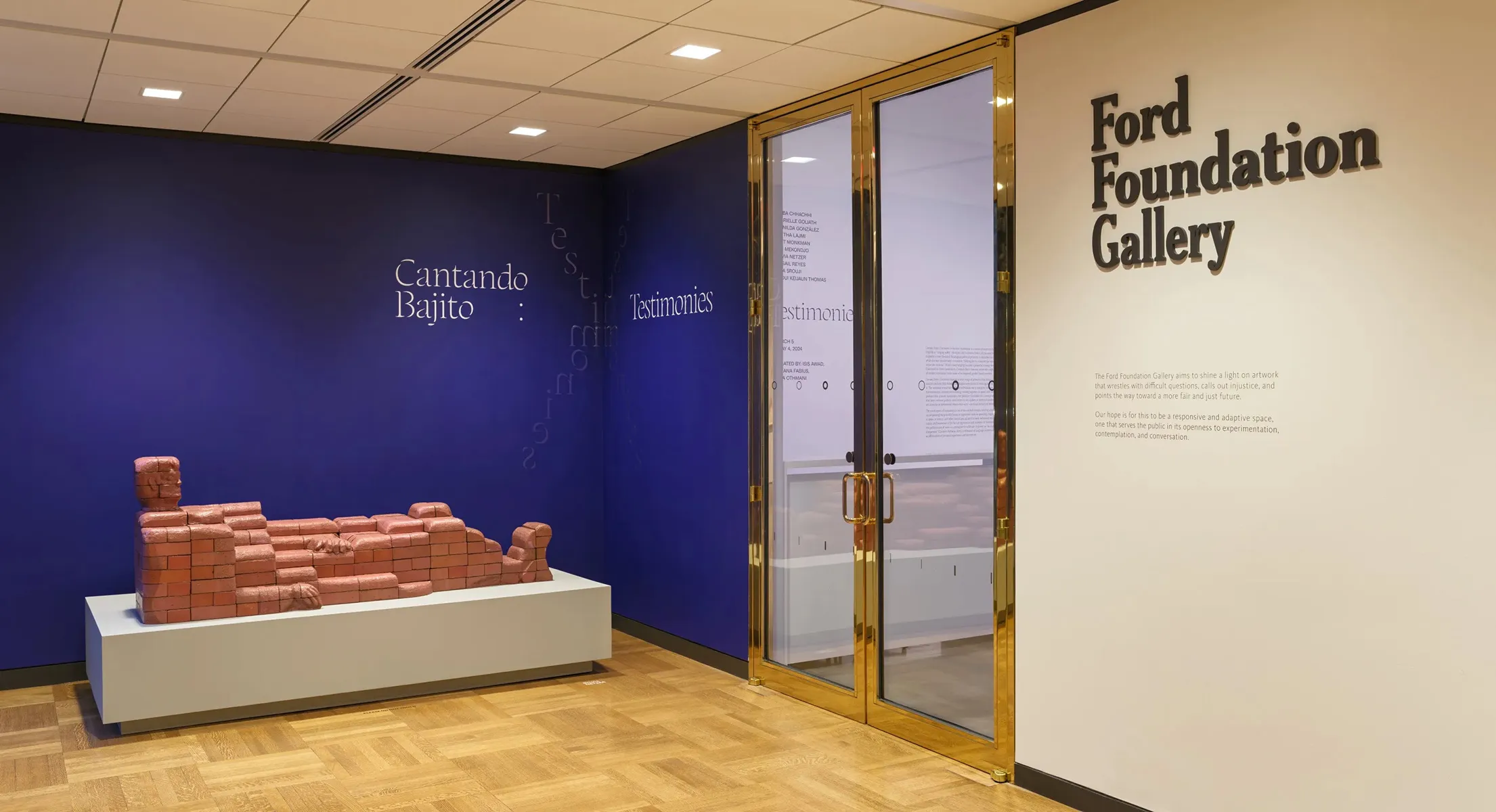
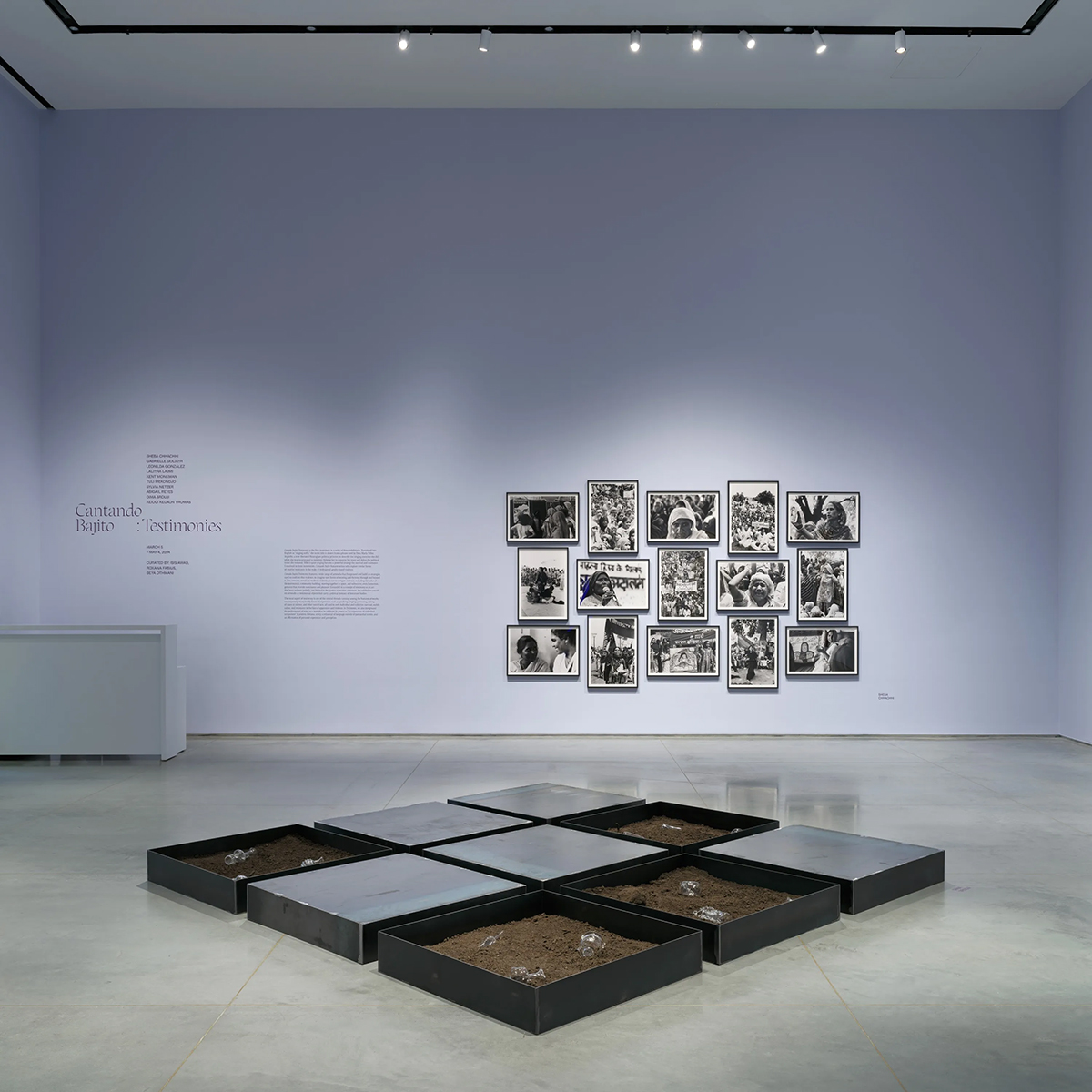
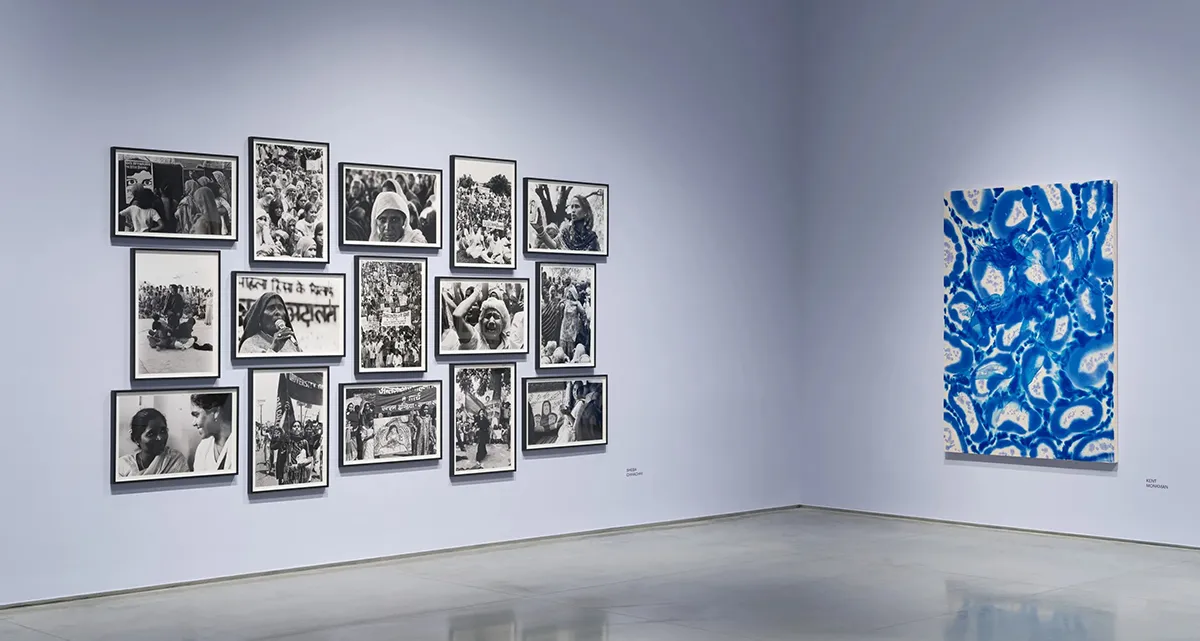
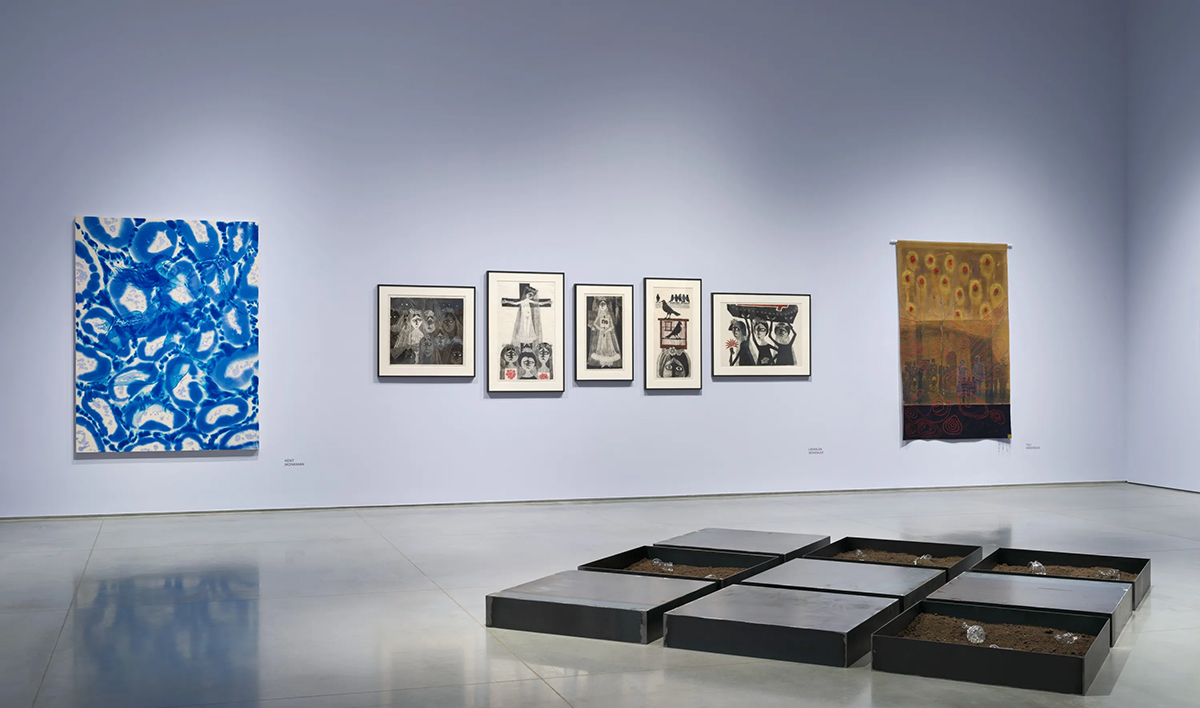
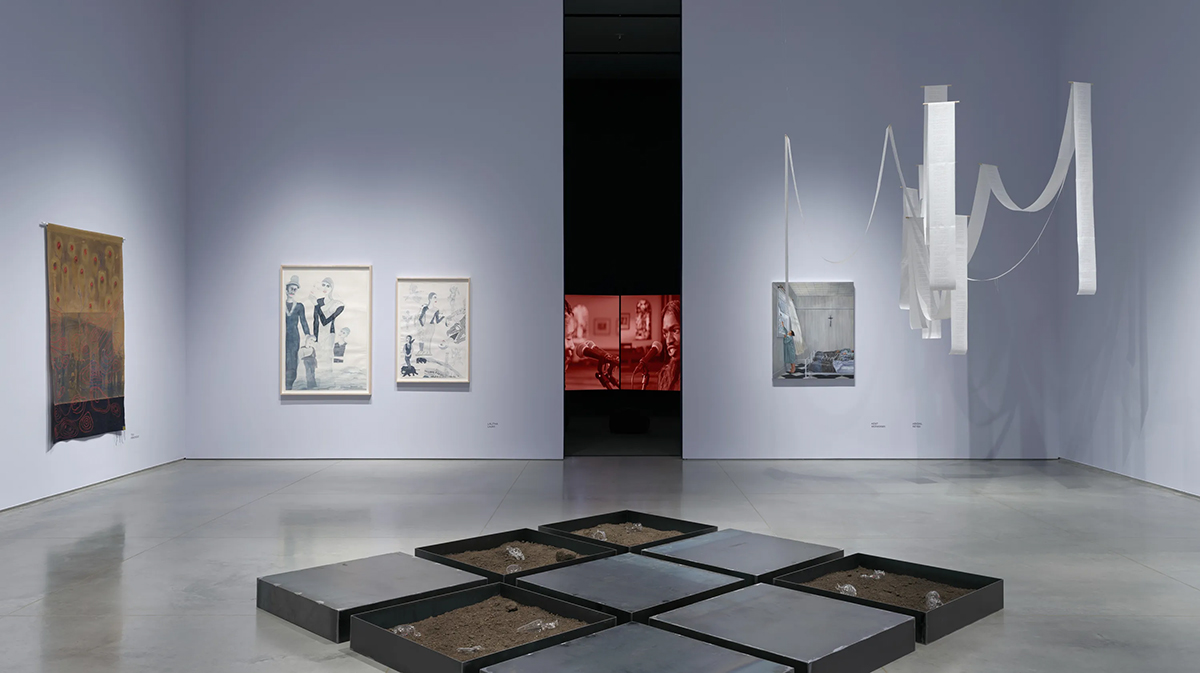
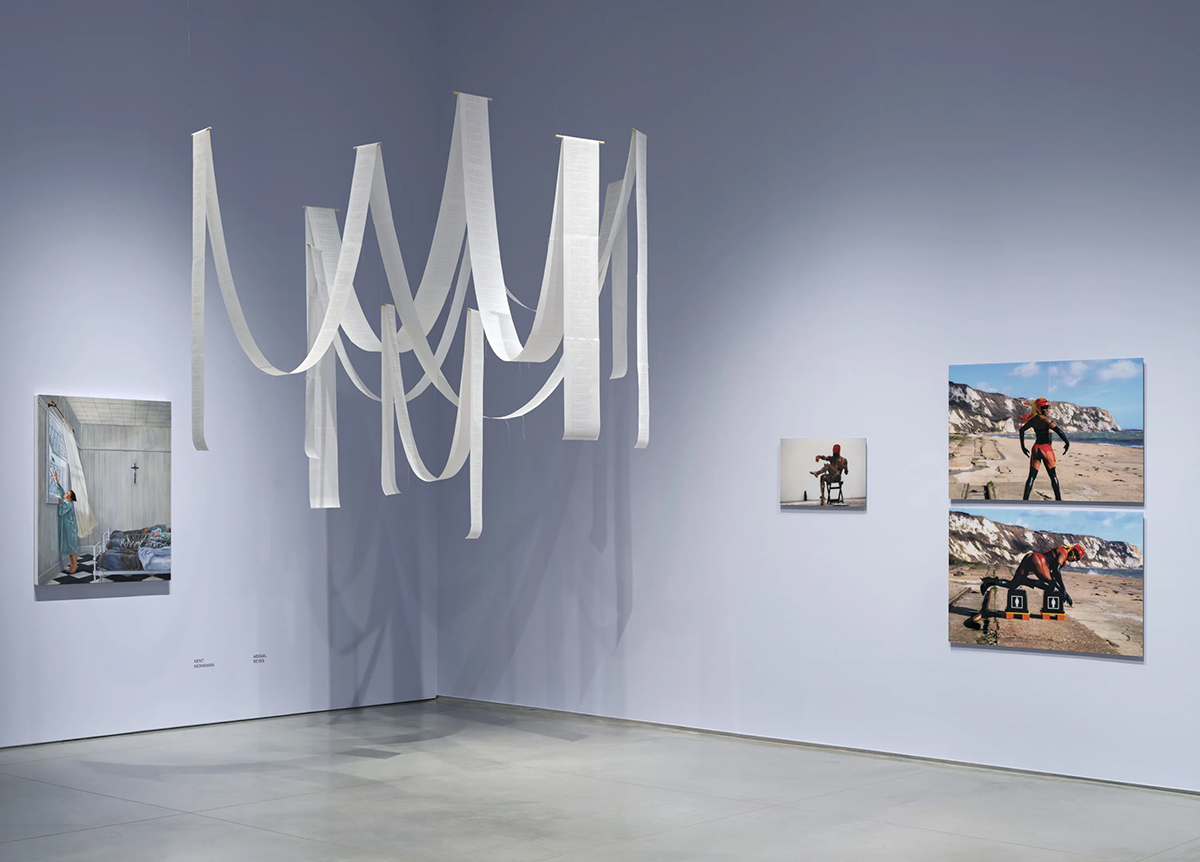
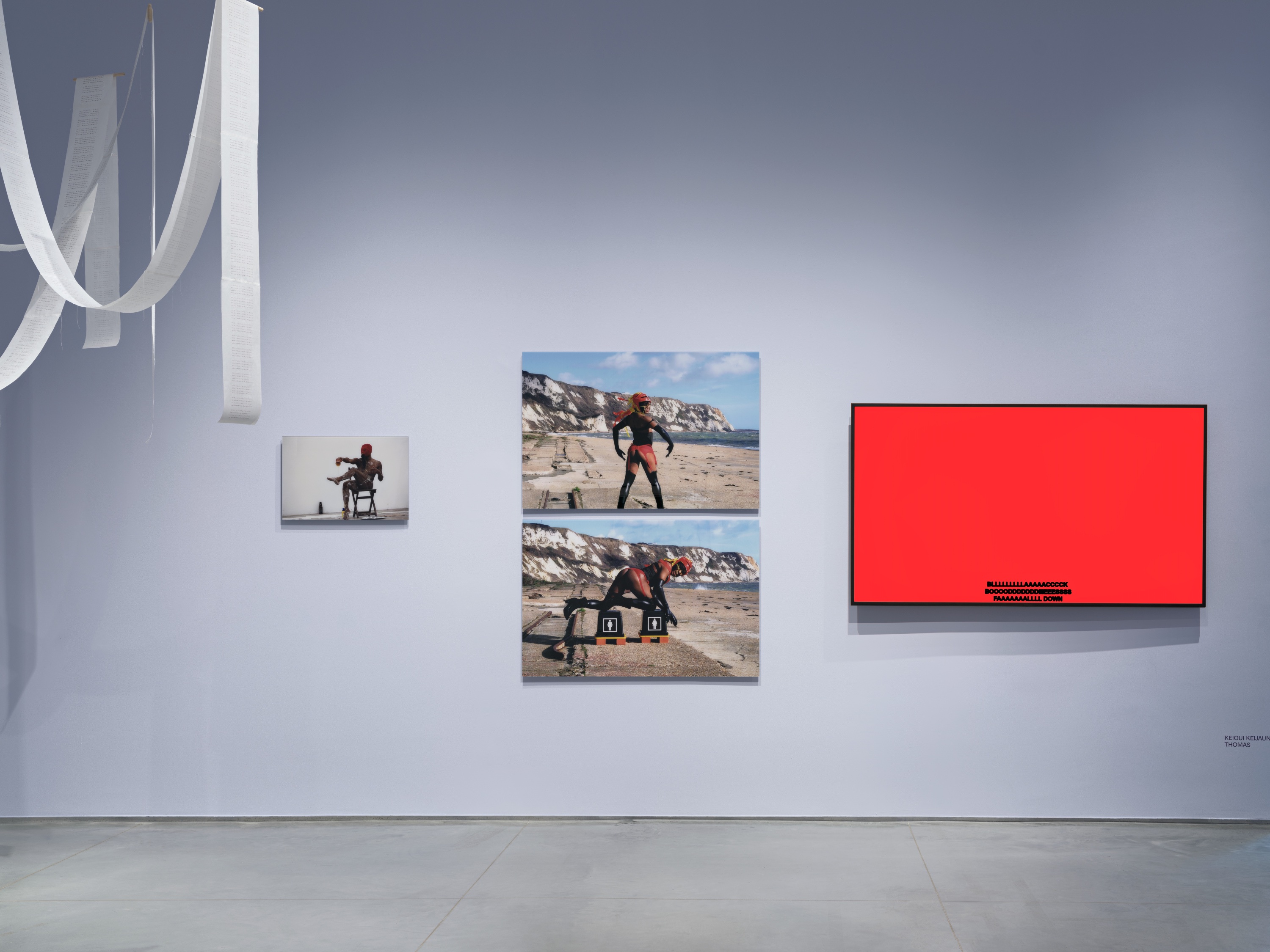
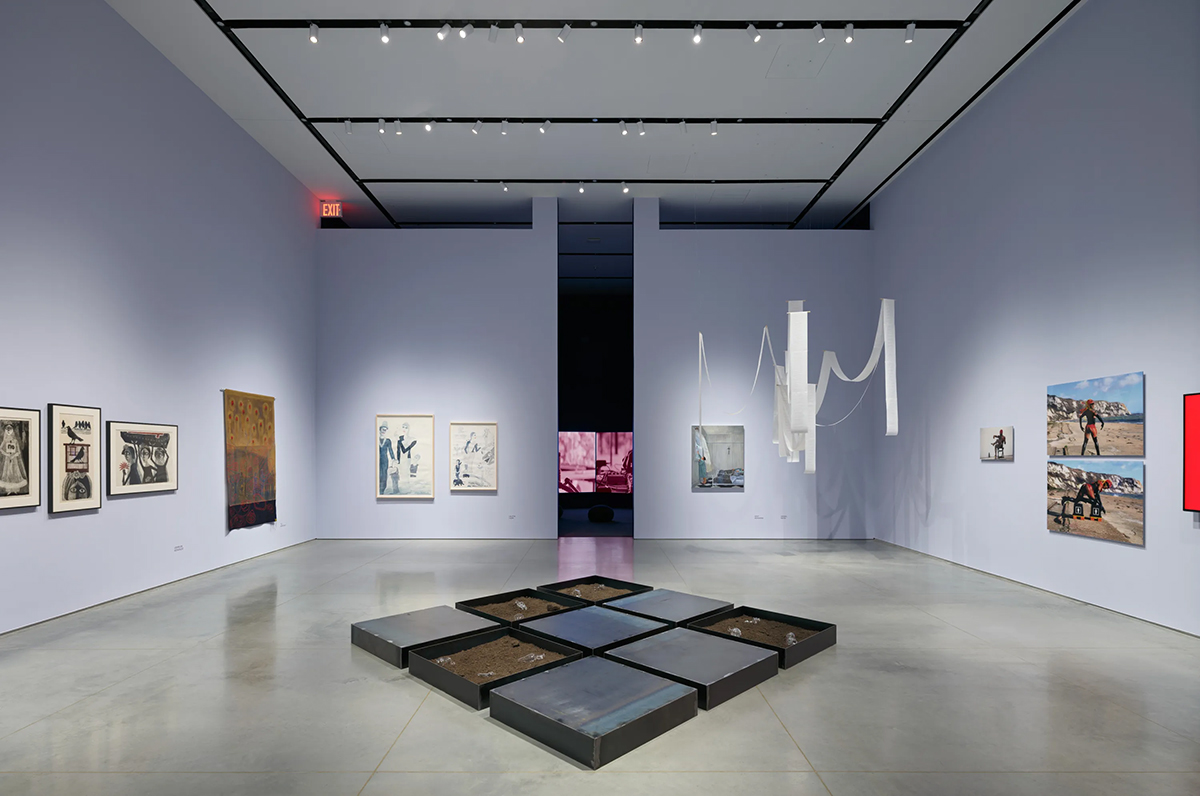
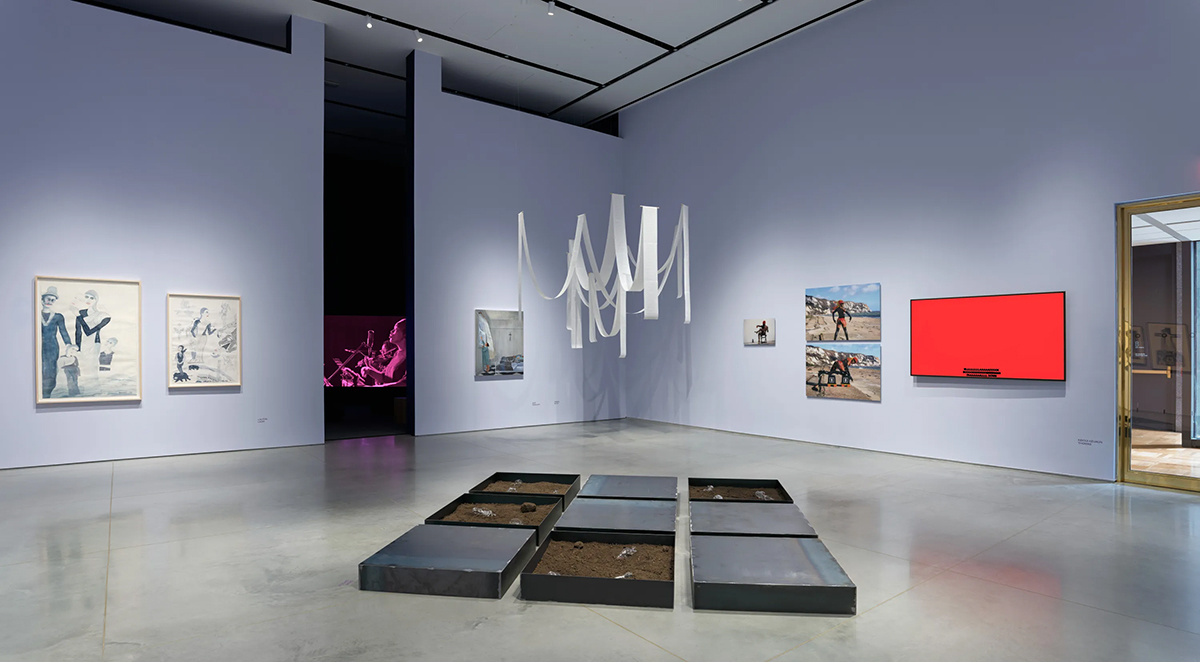
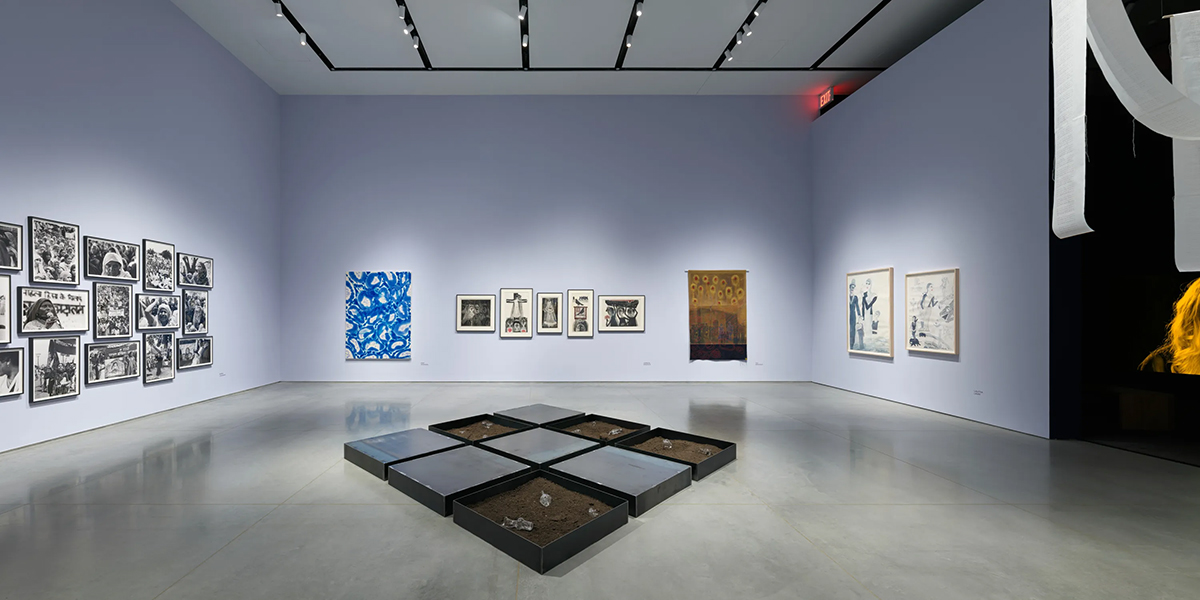
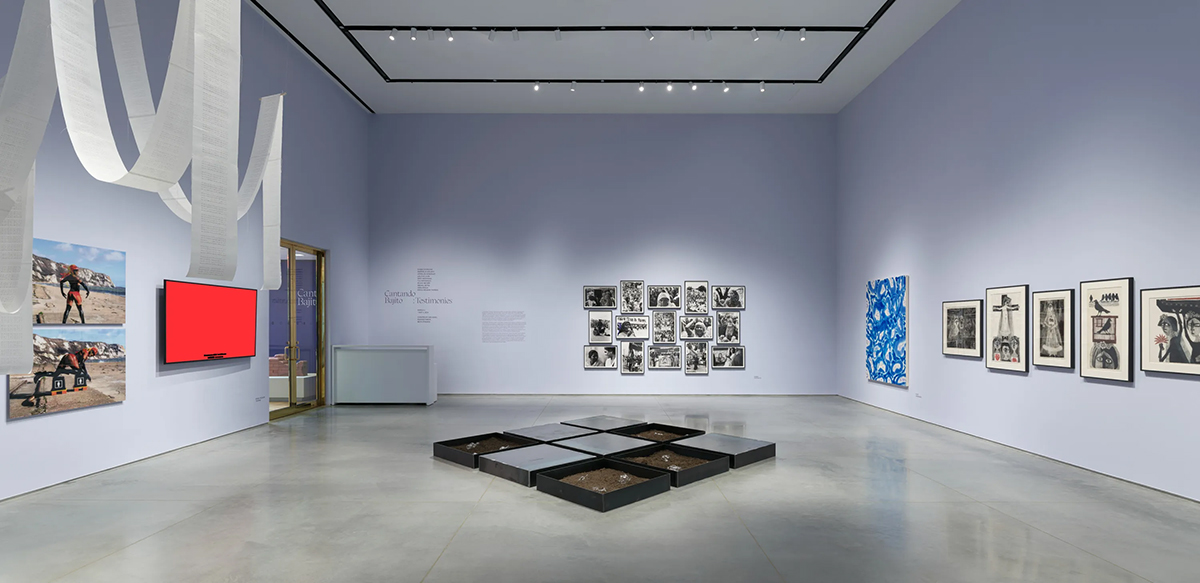
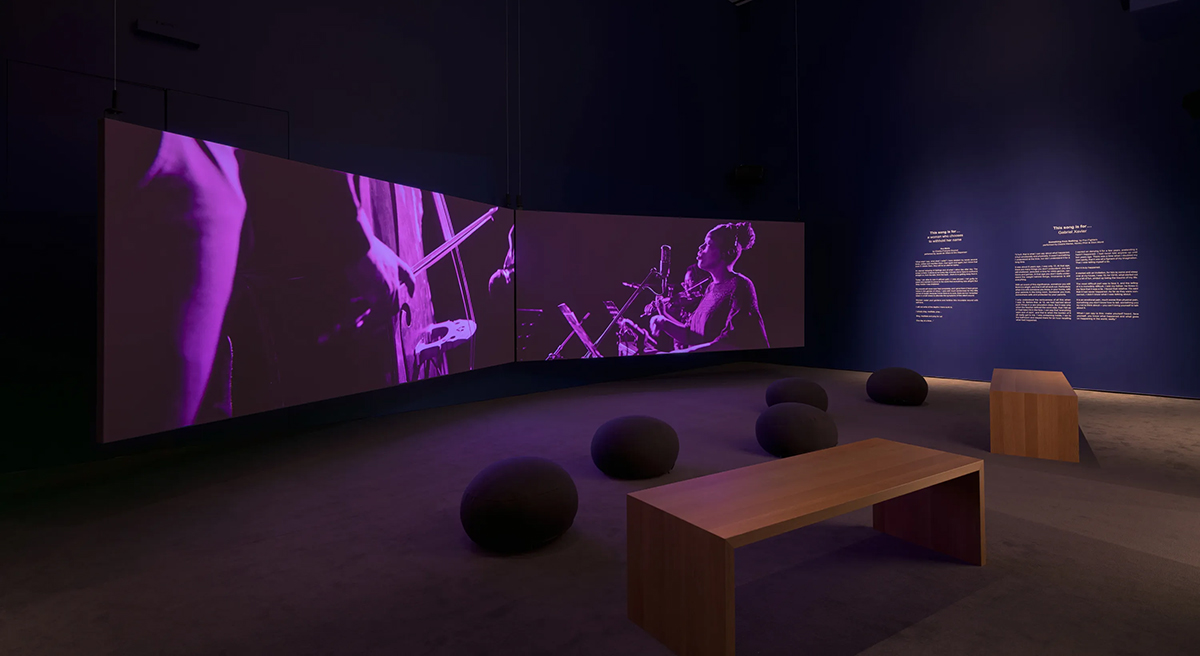
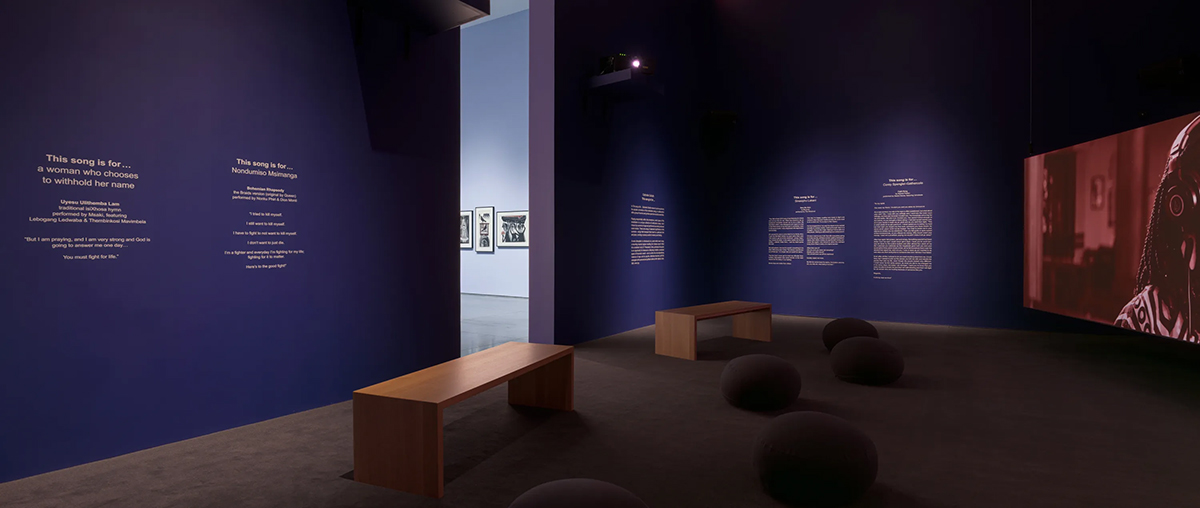
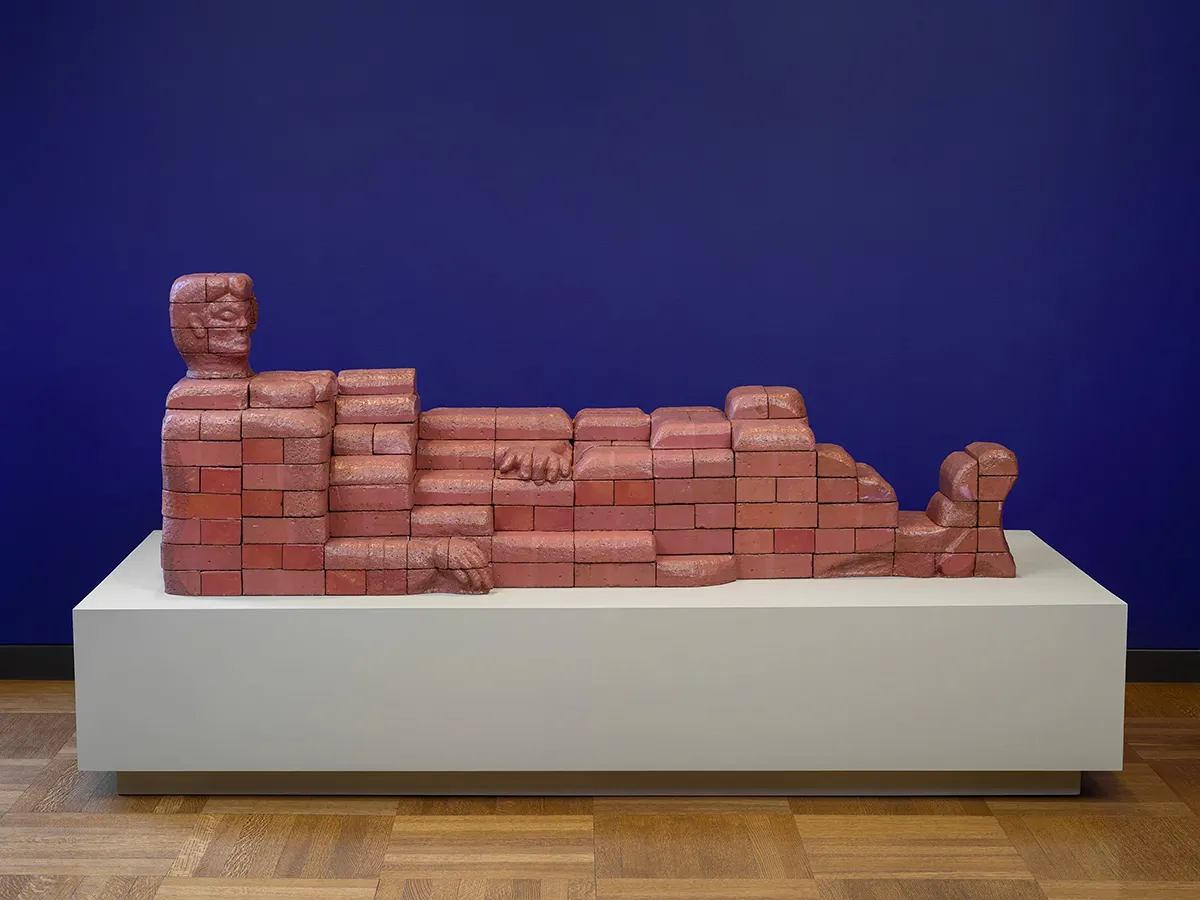
Sylvia Netzer
(United States, b. 1944)
Glen-Gery Olympia, 2004
Carved brick and encaustic
29 x 31 x 84 inches
Photo Sebastian Bach
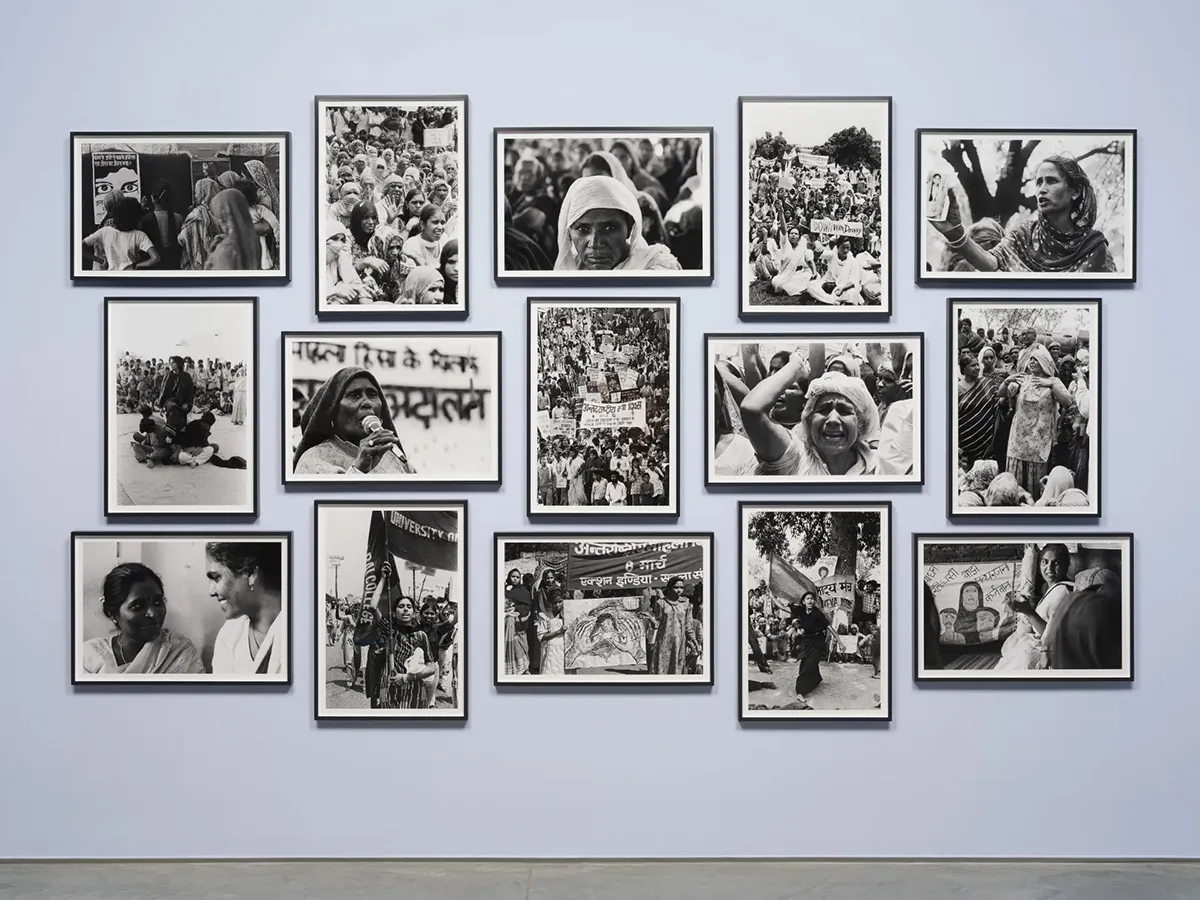
Sheba Chhachhi
(Ethiopia, b. 1958, lives and works in India)
From the Barricades, 1980-97
Archival pigment prints
Dimensions variable
All photos by ©Sheba Chhachhi
Installation Photo Sebastian Bach
Captions for all 15 photographs linked here
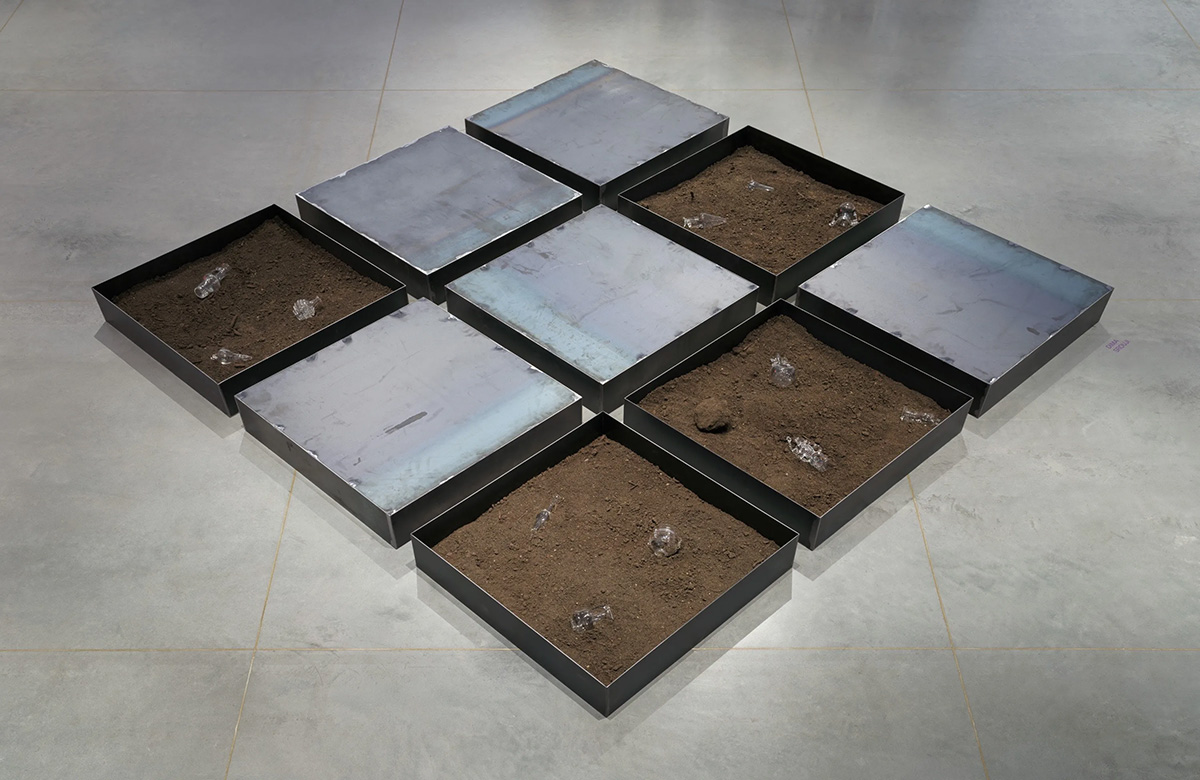
Dima Srouji
(Palestine, b. 1990, lives and works in London)
Maternal Exhumations II, 2023
Steel trays, glass vessels, soil
The glass vessels were produced by the Twam family workshop in Jaba’, Palestine
118 x 118 x 6 inches
Photo Sebastian Bach
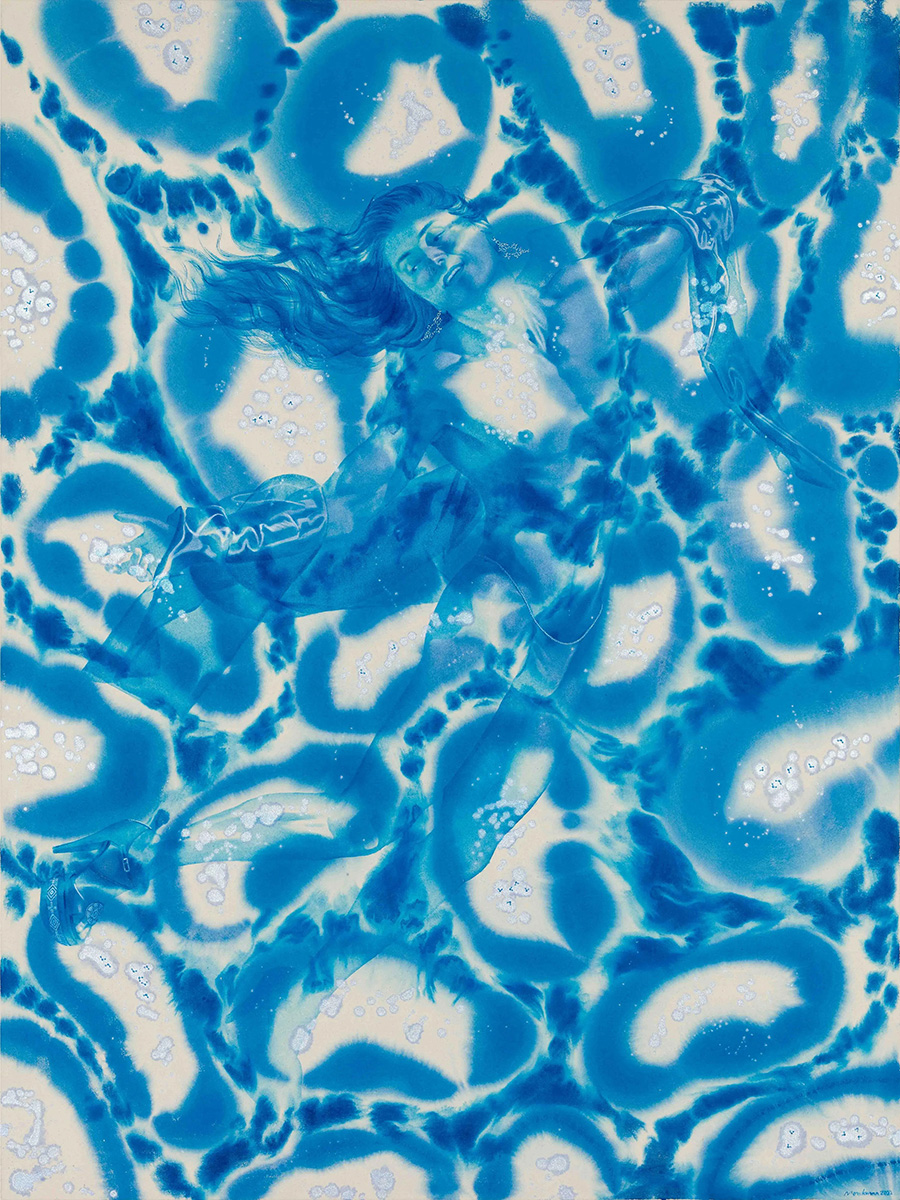
Kent Monkman
(Canada, b. 1965)
I am nipiy, 2022
Acrylic on canvas
72 x 54 inches
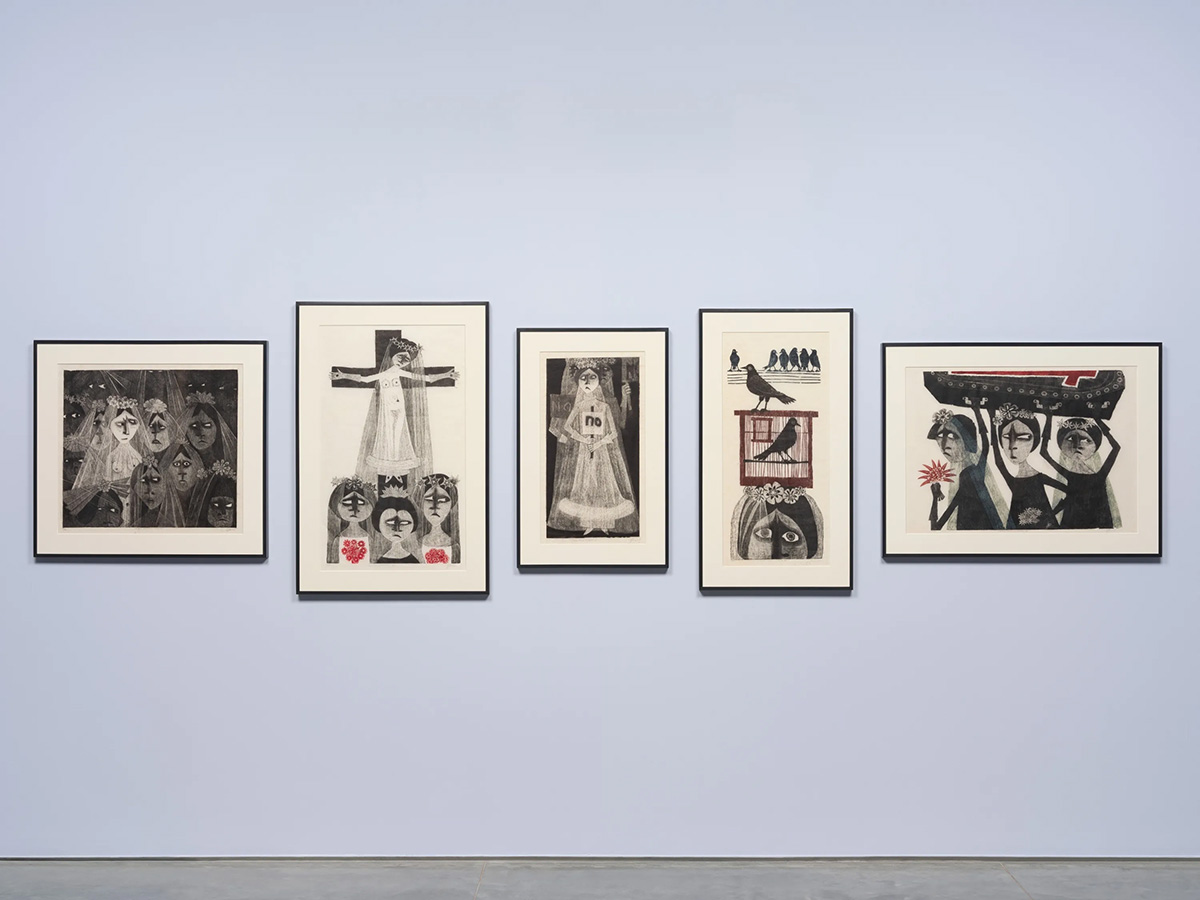
Leonilda González
(Uruguay, 1923-2017)
Novias revolucionarias (Revolutionary brides), 1968-69
Left to Right: I, V, II, XI, IV
Woodcut
Courtesy of Museo Nacional de Artes Visuales (MNAV) Uruguay
Photo Sebastian Bach
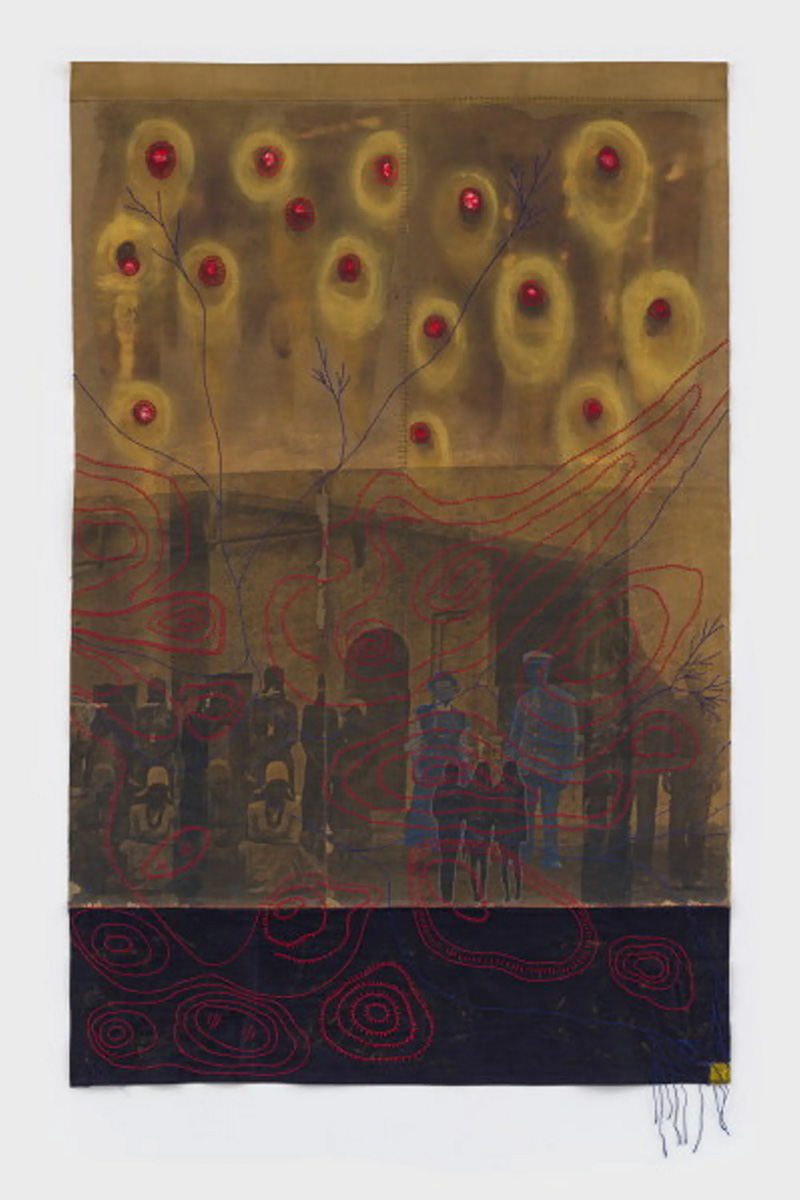
Tuli Mekondjo
(Angola, b. 1982, lives and works in Namibia)
Omalutu etu, omeli medu eli/ Our bodies are within this soil, 2022
Image transfer, resin, acrylic ink, cotton embroidery thread, and rusted cotton fabric on canvas
74.4 x 48 ¼ inches
Courtesy the Artist and Hales Gallery, London and New York
Photo by JSP Art
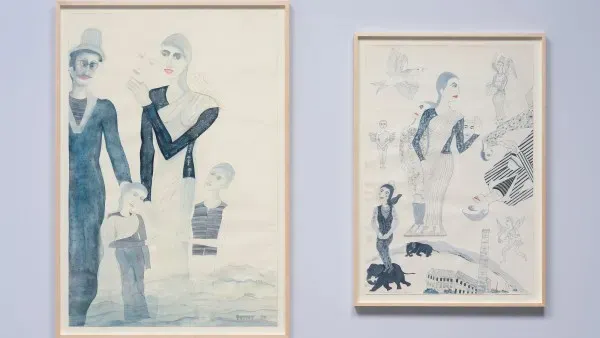
Lalitha Lajmi
(India, 1932-2023)
Performers series, 2011, 2013
Watercolor
Courtesy of Art & Soul, Mumbai
Photo Sebastian Bach
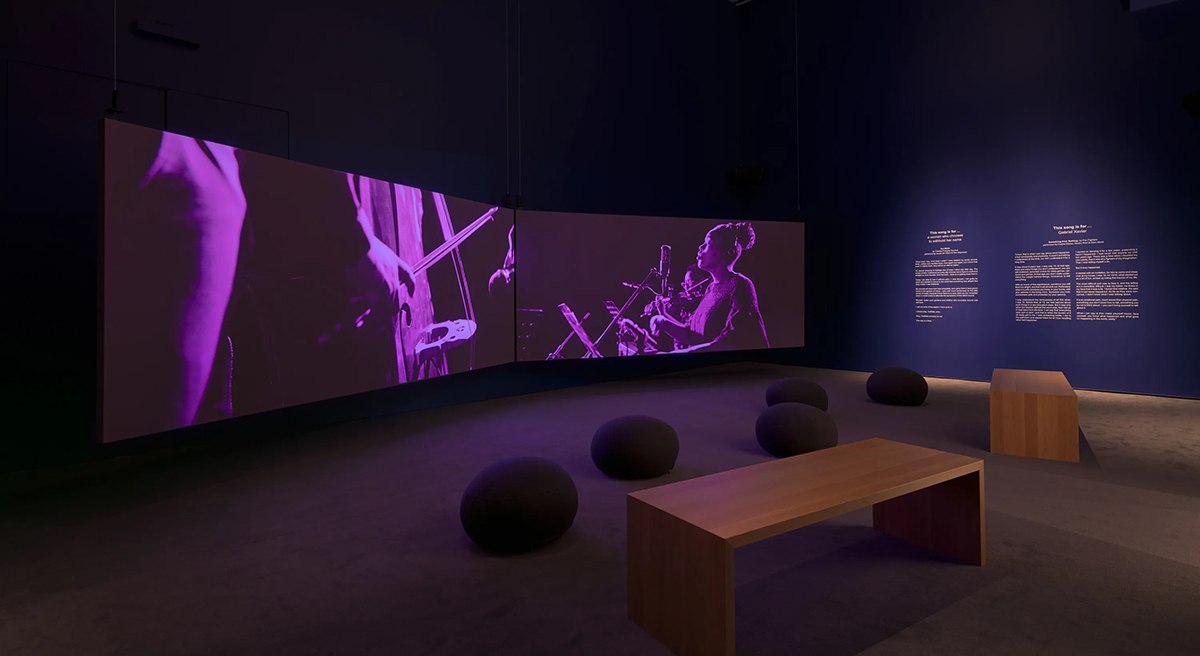
Gabrielle Goliath
(South Africa, b. 1983)
This song is for…, 2019-
2-channel video installation
Dimensions variable
Photo Sebastian Bach
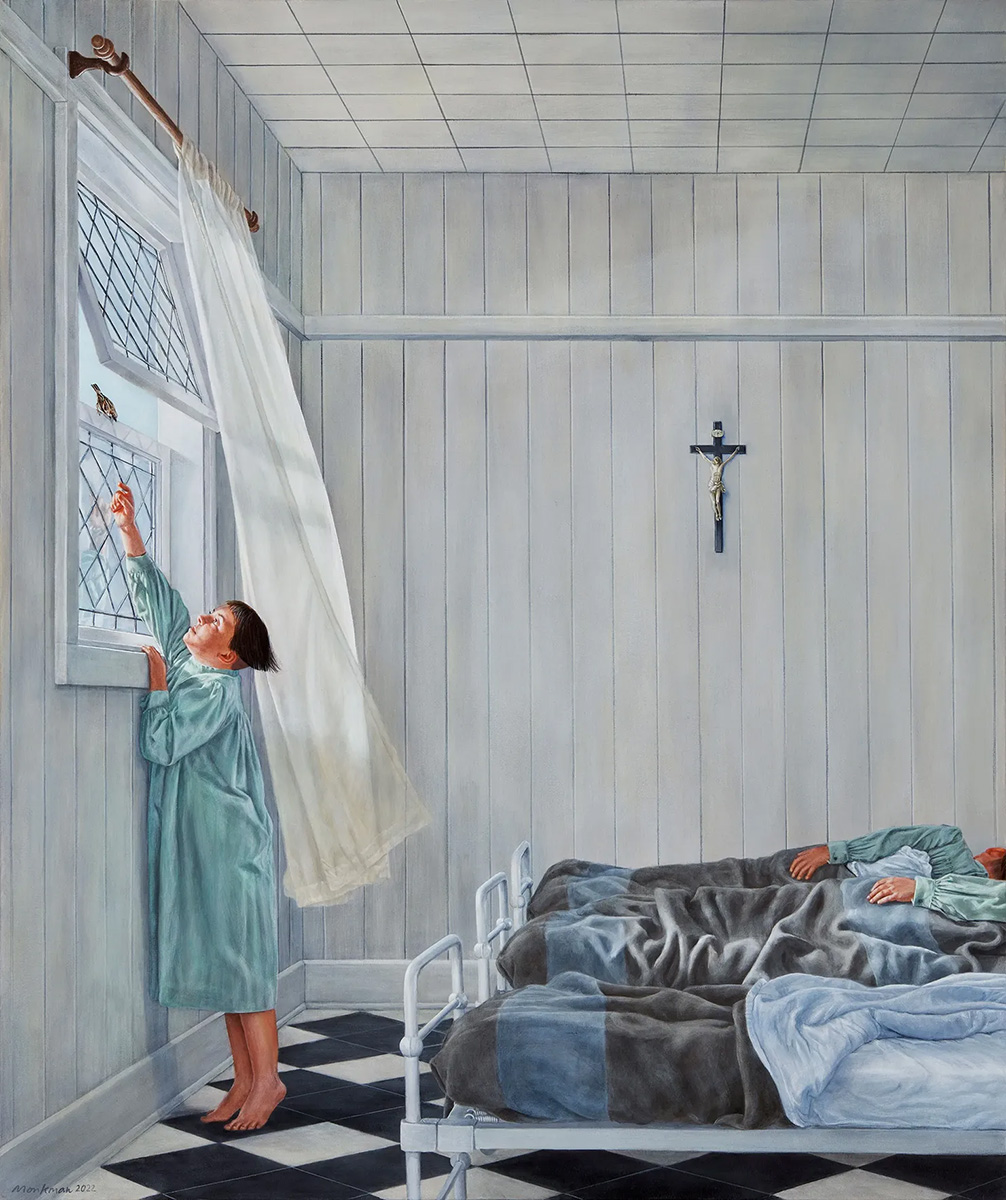
Kent Monkman
(Canada, b. 1965)
Compositional Study for The Sparrow, 2023
Acrylic on canvas
43 x 36 inches
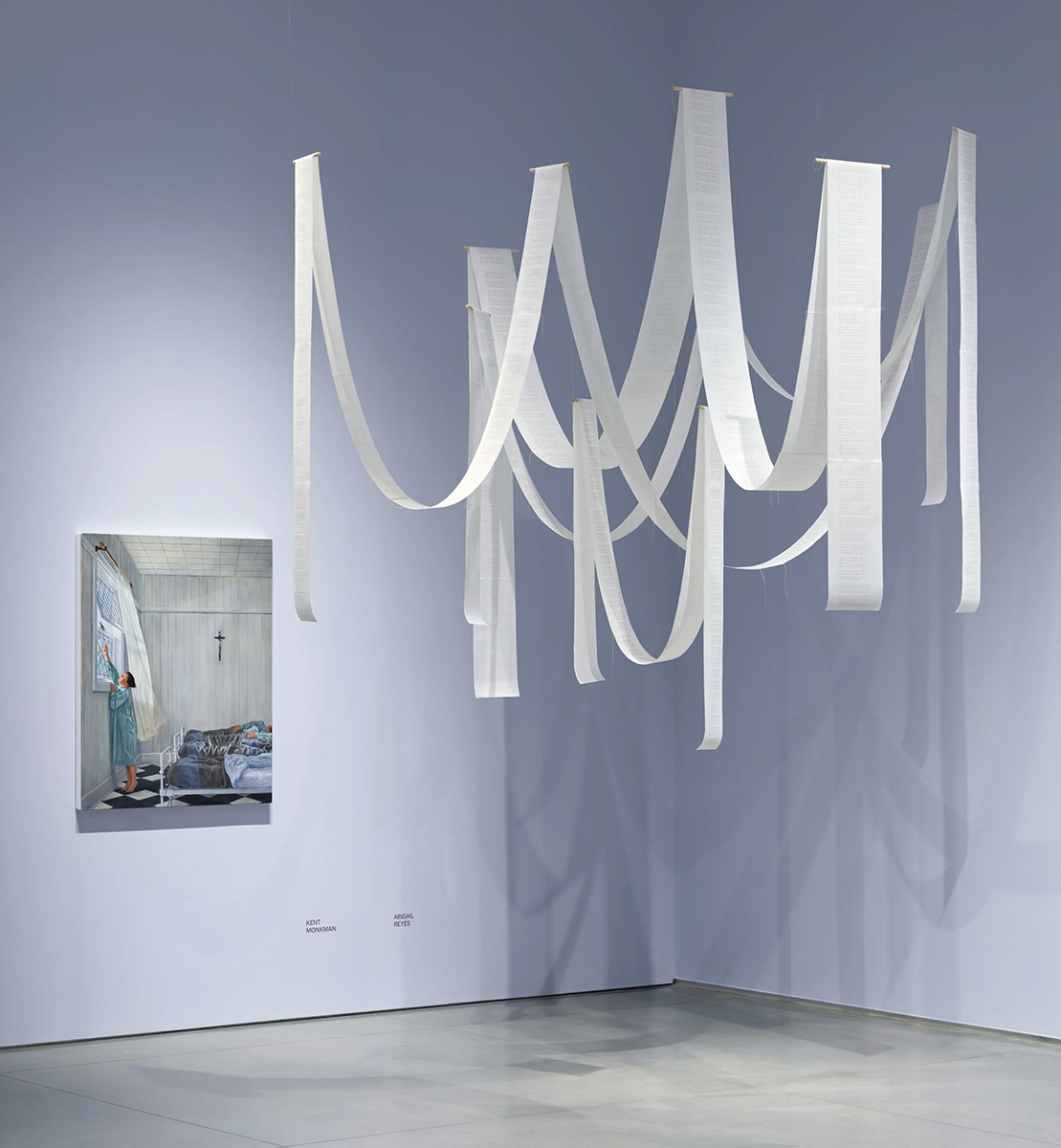
Abigail Reyes
(El Salvador, b. 1984)
Plana, 2014
Rice paper, typed text
Dimensions variable
Photo Sebastian Bach
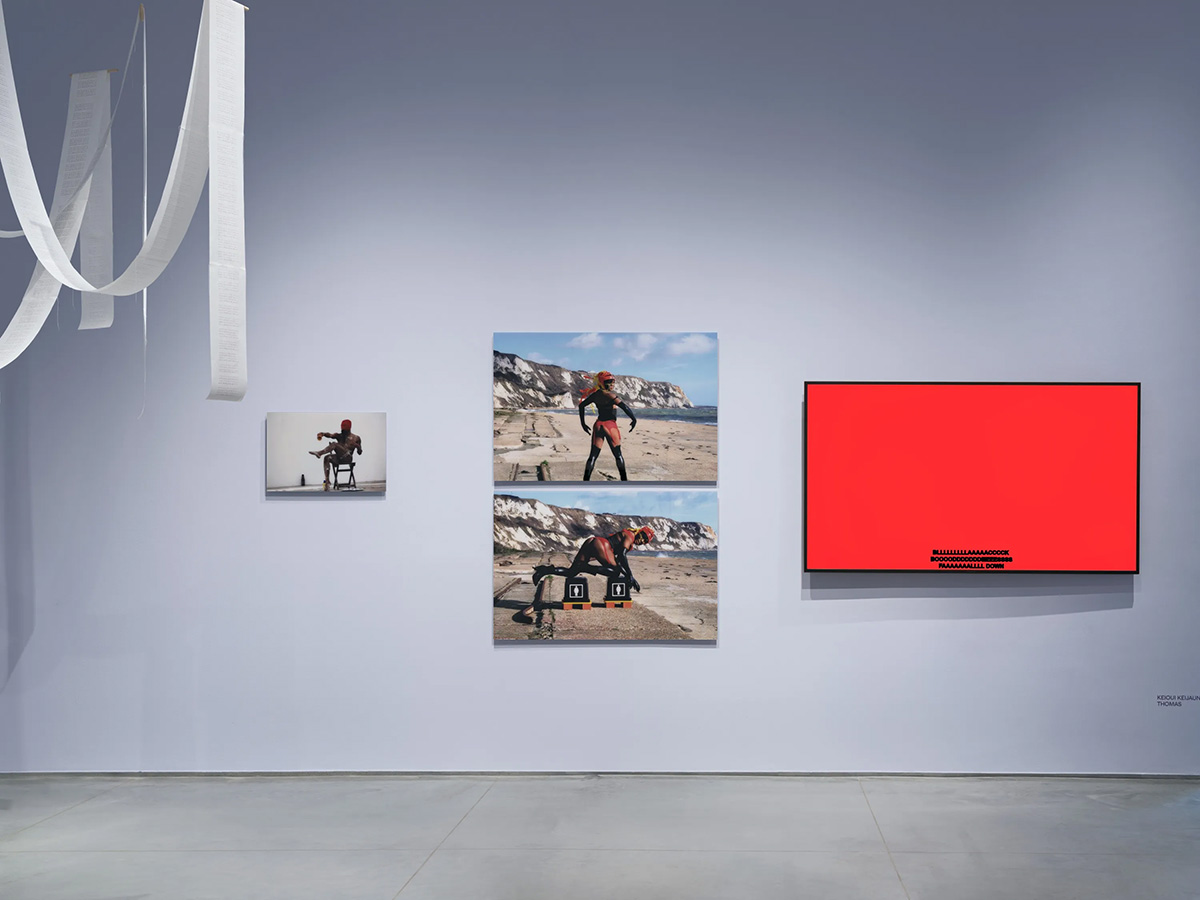
Keioui Keijaun Thomas
(United States, b. 1989)
Partitions of Separation and Trespassing: Section 1. Selective Seeing, Part 2. Looking While Seeing Through, Section 2. Painted Images, Colored Symbols, Part 3. Sweet like Honey, Black like Syrup, Human Resources Los Angeles (HRLA), Los Angeles, CA, 2015
C-print
Photo by Hector Martinez
16 x 24 inches
Snatched n’ Tucked, Field Day, Party Streamer, Ocean Dancer aka Video Vixen aka Hoe 4Life, (Cheer, Leading), 2019
C-print
Photo by Andrea Abbatangelo
30 x 45 inches
Drop Me In The Sea, Fishy (REALNESS), Shopping Basket aka Auction Block aka Stripper Stage, Bricky (Femme-hood), 2019
C-print
Photo by Andrea Abbatangelo
30 x 45 inches
BLACK BODIES, 2018-2021
Closed-captioned video, hot-red, 1 loop with voice/audio, 1 loop without voice/audio
9:21
Photo Sebastian Bach
